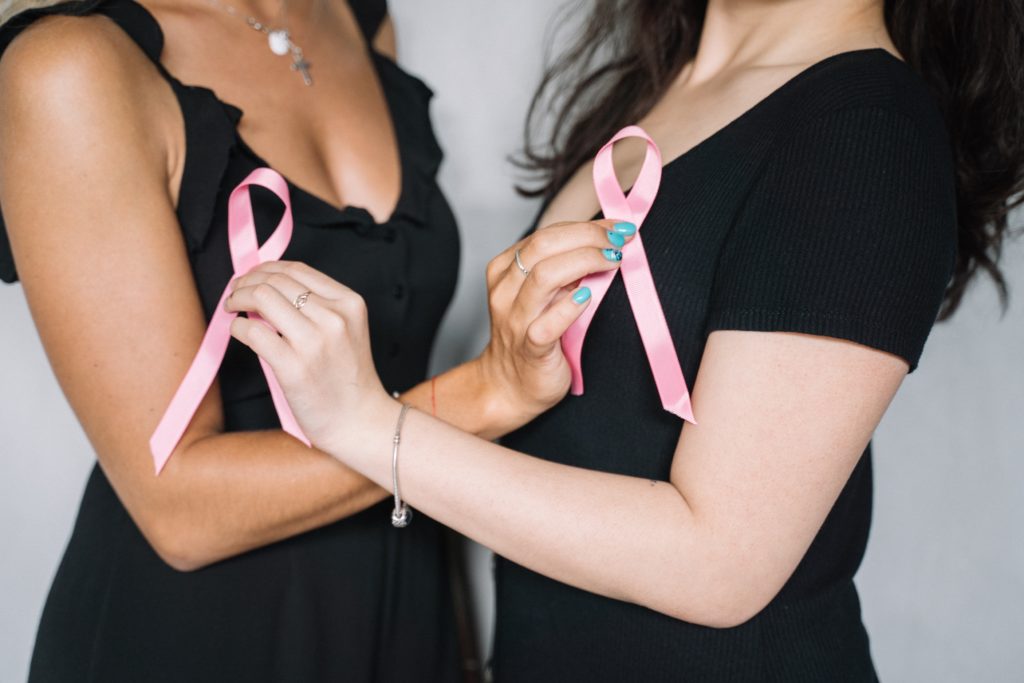- In Celebration of Women - Tuesday, March 30, 2021
- DELUX Health: It’s Time For Your “New Year, New You” Check Up! - Tuesday, February 23, 2021
- Reset Your Mindset – 4 Tips To Go From None To Done In 2021 - Friday, January 1, 2021

As we take time this month to be more aware about breast cancer, it is important to know how to stay up to date. According to the Centers for Disease Control and Prevention, both African American and Caucasian women get breast cancer at the same rate. However, African American women have a higher mortality rate from breast cancer. So essentially, Black women have a higher chance of dying from breast cancer once they have a diagnosis. On top of that, breast cancer is the most common female cancer, and it is the leading cause of cancer death in women worldwide. Yes, you read that correctly—worldwide!
To bring it closer to home, the CDC reports that in 2017, “29,274 new cases of female breast cancer were reported among Black women, and 6,427 Black women died of this cancer. For every 100,000 Black women, 121 new female breast cancer cases were reported and 27 Black women died of this cancer.”[1] That equates to approximately this: 1 in 4 African American women with breast cancer in the United States will die from it.
Now that I have your attention, let’s get started.

Know your risk
There are multiple risk factors that can contribute to a woman’s chances of having breast cancer. Below you will find some of those risks.
- Family history of breast or ovarian cancer – A woman’s risk of having breast cancer increases when there is an immediate family member (e.g., mother, sister or daughter) or multiple family members with cancer. If there is a family history, genetic mutations also play a role, such as the BRCA (pronounced bra-kah) gene. This is why it is so important to discuss your family history with your physician to see if you are a candidate for genetic testing.
- Age – As women get older, they are at higher risk for breast cancer.
- Dense breasts – Women with denser breasts are at higher risk. In addition, dense breast tissue makes it more difficult to visualize masses with breast imaging.
- Prolonged hormone exposure – Hormone exposure for extended periods of time increases a woman’s risk. This includes external sources, such as hormone replacement, in addition to women who start having their menstrual cycle prior to the age of 12 and go through menopause later in life (after the age of 55).
Symptoms: What should I look for?
Below are some signs of possible breast cancer. However, it is important to note that if you feel that any change has occurred in your breasts or something is wrong, you should contact your doctor.
- Any mass or lump in your breast or armpit.
- Abnormal discharge from your nipple, such as pus or blood.
- Skin changes on your breast – any dimpling of the skin or color change. Also, any change in the shape of your breast should be investigated.
Breast self-exams: To do or not to do?
The recommendations regarding breast self-exams have gone back and forth. According to the American Cancer Society, there is not sufficient evidence that breast self-exams increase the incidence of early detection for women who are getting regular mammogram screenings. However, it urges the following: “Women should be familiar with how their breasts normally look and feel and should report any changes to a health care provider right away.”[2] Therefore, women should not undermine breast self-exams because they should still know what is “normal” for their breasts and can recognize things like skin changes, nipple discharge and lumps/bumps.

When should I start getting mammograms?
Please note that the following guidelines are for women at “average risk” for breast cancer. According to the American Cancer Society, this includes women with no family history of breast cancer or genetic mutations, no personal history of cancer and no history of chest radiation treatment prior to the age of 30.
If you are a woman at average risk for breast cancer, you should start getting your screening mammogram at the age of 40 and annually thereafter according to the American Cancer Society. If you have any risk factors, you should get your mammogram sooner than that. It is important to note that there are also different imaging tests for breast cancer. Mammograms are the recommended screening test; however, some factors can play a role in a woman requiring another test, including but not limited to a breast ultrasound or breast MRI. Therefore, it is vital to communicate your history and risk factors to your doctor so you can discuss the appropriate time to start screening
With October being Breast Cancer Awareness Month, I urge you to take the time to assess whether or not you have any risk factors for breast cancer and if you should be getting a screening mammogram. In addition, make it a topic of conversation. Make sure your sisters, mother and friends are also up to date with their breast cancer screening. Gather all the important information and make an appointment with your doctor. Remember, if the cost of breast cancer screening is a barrier, there are community resources that can help.
Do what is best for your breasts. Be informed and be proactive.
Dr. Musielak is the creator and host of The Dr. Mom Show Podcast. You can find more information at www.drdelenemusielak.com. Dr. Musielak is accepting new patients of all ages. Learn more and schedule your mammogram online today at: www.stlukesstl.com/mammography.






